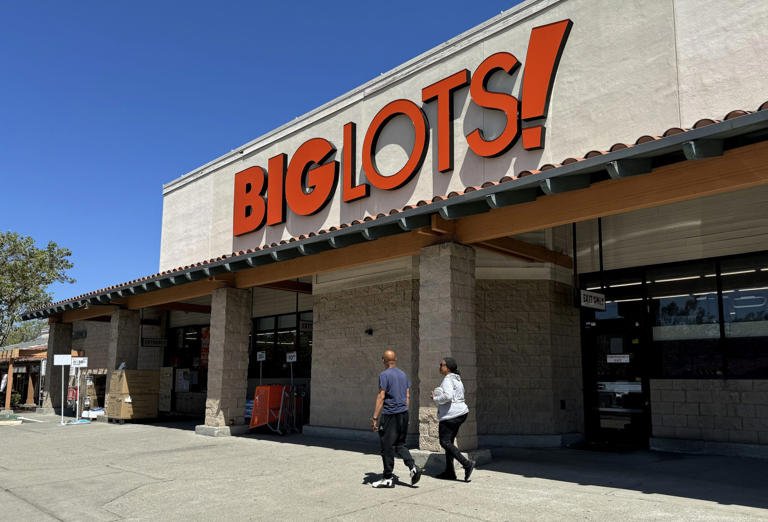Big Lots to Close 40 Stores Amid Potential Bankruptcy, 109 California Locations Affected
Big Lots, the well-known discount retailer, is facing significant financial challenges that have led to the decision to close 40 of its stores across the United States. This move comes as the company contemplates filing for bankruptcy, a development that underscores the precarious situation many brick-and-mortar retailers find themselves in today. Notably, 109 of the affected locations are in California, where the impact is expected to be particularly significant.

The Rise and Fall of Big Lots
Big Lots has been a staple in the American retail landscape for decades, offering customers a wide array of products ranging from furniture and home decor to groceries and seasonal items at discounted prices. Founded in 1967, the company grew rapidly, establishing itself as a go-to destination for bargain hunters. However, in recent years, the retail giant has struggled to maintain its foothold amid fierce competition from e-commerce giants like Amazon, as well as big-box retailers such as Walmart and Target.
The retail industry has undergone seismic shifts, driven by changing consumer preferences and the rise of online shopping. These changes have left traditional retailers like Big Lots grappling with declining foot traffic, increasing operational costs, and the need for significant investments in digital transformation. Despite efforts to adapt, including revamping its e-commerce platform and enhancing in-store experiences, Big Lots has found it challenging to reverse its downward trajectory.
Reasons Behind the Store Closures
The decision to close 40 stores is a direct response to the company's ongoing financial struggles. While the specific locations of the closures have not been disclosed, the company has confirmed that these stores are underperforming and not meeting profitability targets. By shuttering these locations, Big Lots aims to streamline its operations and focus on its more successful stores.
The closures are also part of a broader strategy to cut costs and preserve cash as the company navigates through its financial difficulties. This strategy includes reducing inventory levels, renegotiating leases, and implementing cost-saving measures across its supply chain. Unfortunately, these efforts may not be sufficient to stave off bankruptcy, which remains a looming possibility for the retailer.

Impact on Employees and Communities
The closure of 40 stores will have a profound impact on Big Lots' employees and the communities they serve. Thousands of workers are expected to lose their jobs, adding to the already significant job losses in the retail sector due to the ongoing economic challenges exacerbated by the COVID-19 pandemic.
For many communities, Big Lots stores serve as essential retail hubs, providing affordable options for household necessities. The loss of these stores could create voids in local retail landscapes, particularly in areas where Big Lots is one of the few discount retailers available. This could force consumers to travel further for their shopping needs, potentially increasing their expenses and reducing convenience.
The California Factor
With 109 of Big Lots' locations situated in California, the state is poised to experience a considerable impact from these closures. California, with its high cost of living and large population, has been a critical market for Big Lots. The state's diverse demographics and expansive geography have made it an attractive location for the retailer's discount offerings.
However, California's retail environment is also highly competitive, with numerous discount and big-box retailers vying for consumer attention. The state's stringent regulatory environment and high operating costs have added to the challenges faced by retailers like Big Lots. The closure of stores in California will not only affect employees and customers but could also have broader economic implications for the state, including reduced sales tax revenue and increased unemployment.
Potential Bankruptcy and the Road Ahead
The potential bankruptcy filing is a clear indication of the severity of Big Lots' financial woes. If the company does proceed with bankruptcy, it could follow a similar path to other retailers who have sought Chapter 11 protection to restructure their debts and emerge as leaner, more financially stable entities. This process often involves renegotiating debt obligations, closing additional underperforming stores, and seeking new investment.
For Big Lots, a successful restructuring could provide a lifeline, allowing it to focus on its core strengths and adapt to the evolving retail landscape. This could include further investments in its e-commerce platform, enhancing its product offerings, and optimizing its supply chain for greater efficiency. However, the road to recovery will not be easy, and the company will need to navigate numerous challenges to regain its footing.

The Broader Retail Context
Big Lots' struggles are emblematic of broader trends in the retail industry. The shift towards online shopping has forced traditional retailers to rethink their strategies and invest heavily in digital capabilities. Retailers who have successfully navigated this transition have often done so by embracing omnichannel approaches, leveraging technology to provide seamless shopping experiences across both physical and digital platforms.
Additionally, changing consumer preferences, particularly among younger generations, have driven demand for more personalized and convenient shopping experiences. Retailers that can effectively harness data to understand and anticipate customer needs are better positioned to thrive in this environment. For Big Lots, aligning its strategy with these trends will be crucial if it hopes to compete in the future.
Conclusion
The closure of 40 Big Lots stores as the company contemplates bankruptcy marks a critical juncture for the retailer. The significant impact on employees, customers, and communities, particularly in California, highlights the broader challenges facing the retail industry. As Big Lots navigates this difficult period, its ability to adapt and innovate will determine its future success.
For now, the focus remains on managing the immediate financial crisis and ensuring the company's survival. Whether through bankruptcy restructuring or other strategic initiatives, Big Lots must find a way to regain its competitive edge and reestablish itself as a leading player in the discount retail sector. The coming months will be pivotal in shaping the future of this once-dominant retailer.


You must be logged in to post a comment.